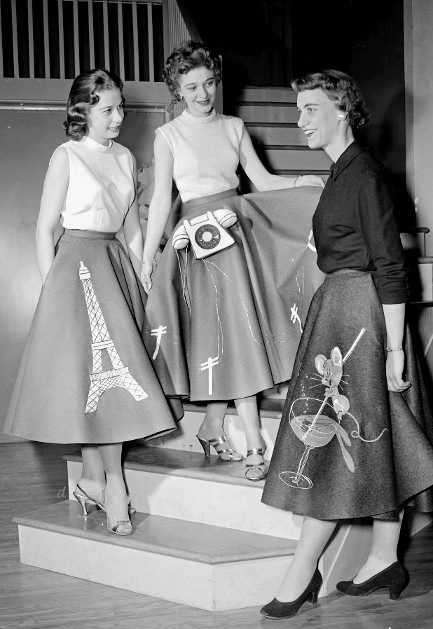I'm not watching #MarieAntoinettePBS and I wasn't going to nitpick the costumes; I don't think that's very interesting or useful. Historical films are not (nor should they be) documentaries, and I don’t want to come across as a cranky pedant or yuck someone else’s yum. HOWEVER…. 

A few people have sent me this lewk and I'm going to do a 🧵, because it's something I've researched and written about extensively and because it shows how even well-intentioned, well-budgeted historical costuming can go off the rails when you don't HIRE👏FASHION👏HISTORIANS👏. 



"Whhyyyy is Marie-Antoinette wearing a cold-shoulder dress?" is not the question you should be asking. This is meant to represent a real gown called a grand habit. It was worn at court and only at court on formal and ceremonial occasions. At right is a Swedish royal wedding gown. 



From the get-go, the grand habit (far left) had nothing to do with fashion. It was a hybrid style invented by King Louis XIV in the 1660s. As a cranky old man, he disliked the newfangled mantua (seated, at right) and wanted to revive the more formal womenswear of his youth. 

Instead of a chic, sleeved gown worn over a petticoat (meaning a skirt) and stomacher (the triangular piece that covered the stomach), it consisted of a sleeveless, off-the-shoulder, back-lacing bodice reinforced with whalebone (meaning sewn-in strips of baleen, like a corset)... 



...a separate petticoat, and a long, detachable train, often invisible from the front. This is a grand habit made for a 23-inch tall fashion doll, now in the Fashion Museum, Bath. The bare shoulders, back lacing, and 3-piece construction were absolutely unique to court dress. 



The upper arms were covered by 3-tiered lace sleeves called manches de cour (court sleeves). All lace was handmade, so this was a huge expense on top of the already huge expense of the gown itself. Again, something you'd ONLY wear at court--if you could afford to go at all. 







The trimmings, colors, fabrics, and skirt size and shape fluctuated with fashion and the seasons, but the basic elements stayed the same for more than a century, until the Revolution. Court dress was not supposed to make you look young, thin, or attractive; it made you look rich. 







Even Marie-Antoinette found court dress old-fashioned, weird-looking, overpriced, and impractical. So props to the designer for going there at all--most costume dramas omit it, including #Bridgerton; Queen Charlotte famously mandated hoops at court long past their sell-by date. 







The Coppola Marie-Antoinette TRIED to do court dress--but this is just a regular, one-piece 18th-century open robe with a stomacher and square neckline to which they've added tiers of sleeve ruffles. 



Similarly, the Outlander wedding gown was clearly inspired by both the grand habit worn at virtually every European court and the English court dress of the 1740s, called a stiff bodied gown, which was less archaic but still distinct from modern fashion--notably the boned bodice. 



Where #MarieAntoinettePBS went wrong was in not understanding the construction of the grand habit--which is not surprising since there are only a handful of them left intact, and they're mostly in Swedish and Russian museums, including this royal wedding gown in Stockholm. 



Thus, they made a one-piece cold-shoulder gown rather than an off-the-shoulder bodice with a separate skirt and train, accessorized by a palatine (or tippet), a decorative scarf typically made of embellished gauze, lace, crêpe, tulle, or, in the winter, fur. 







Sometimes you get the same effect from curls (often false) or the black lace lappets frequently worn with court dress. Again: NOT STRAPS. 







And this is what I mean by going off the rails. Someone looked at a real 1770s portrait of the real Marie-Antoinette and copied it in 2D rather than trying to understand it in 3D. It's like trying to design a tuxedo when you've only seen them in pictures and coming up with this: 

Most costume designers like to do their own research, and I don’t blame them—research is fun! It’s inspiring! But you don’t know what you don’t know, and—as my colleague @Hannah_Greig says—there’s a big difference between making (informed) choices and making (dumb) mistakes. 

I’ve done historical consulting for filmmakers, authors, and illustrators, and it always starts with a tutorial on what the characters REALLY would have worn. Where it goes from there isn’t up to me, but I stick around to answer questions and flag problems, like this whole deal: 

If you’re interested in 18th-century French fashion, court dress, and/or Marie-Antoinette, there’s an award-winning book for that! @yalepress #MarieAntoinettePBS 

Also check out my pinned #Bridgerton thread and my @WornOnThisDay account:
https://twitter.com/WornOnThisDay/status/1620754472673607681
• • •
Missing some Tweet in this thread? You can try to
force a refresh

 Read on Twitter
Read on Twitter



















